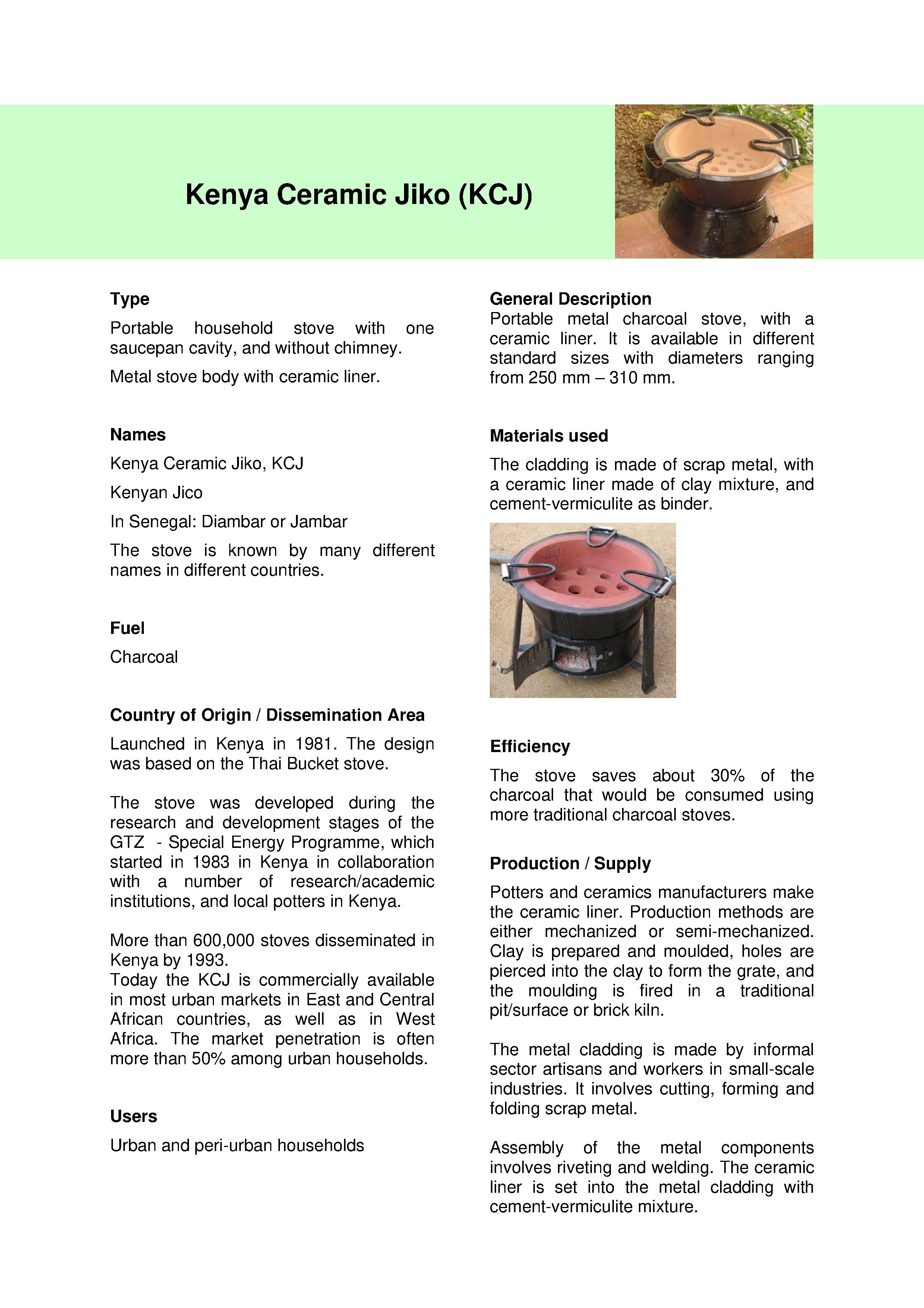Charcoal Cookstoves
--> Back to Overview Cooking Energy Compendium
Charcoal Stoves
Charcoal is charred wood, which has lost all the moisture and most of the volatile contents in the production process. Thus it is a high- energy, light-weight, easy-to-handle fuel which burns without developing much smoke. These properties make it a preferred fuel especially in urban and peri-urban areas. Its main disadvantage is its highly inefficient production process: a high part of the wood’s energy content is lost without further use during the charring process.
In contrast to wood, cooking with charcoal requires the use of a stove. Most traditional charcoal stoves are made of scrap metal with no option to regulate the burn-rate of the fuel and often without pot-rests, so that the pot sits directly on the charcoal. This causes extremely high emissions of carbon monoxide.
In Africa, the most widespread example of an improved charcoal stove is the Kenyan Ceramic Jiko (KCJ). Similar designs have been replicated in many parts of Africa in the last two decades, sometimes with such success, that e.g. in Eastern Africa they can be considered the new baseline technology. This stove type has a ceramic liner in a metal cladding.
The ceramic liner protects the outer metal structure from deterioration by the fire. It also provides improved insulation, hence higher efficiency and a hotter flame. It has pot-rests creating a small gap between the charcoal and the pot, to allow some of the produced carbon-monoxide to burn off. Combustion is thus improved and less dangerous smokes emitted. Due to these design characteristics the stove can save up to 40 % of charcoal compared to traditional charcoal stoves while reducing toxic emissions. As most charcoal is purchased, users see the monetary benefit of saving fuel, which has made this stove model an economic success.
More recent efforts to design even more efficient charcoal stoves than the KCJ also include light-weight all-metal designs. These are relevant for areas, where suitable clay is lacking or where it is found challenging to combine the two trades of metal and ceramic workers to produce one common product.
New generation charcoal stoves were a major topic at Stove Camp 2010 held at Aprovecho Research Institute. First attempts to (re)define design principles for charcoal stoves are documented here: http://www.bioenergylists.org/content/charcoal-stove-design and http://www.bioenergylists.org/files/HaitiCharcoal_final.pdf
Important characteristics of good charcoal stoves are:
- durability
- appropriate insulation
- high and adjustable airflow to maximise combustion
- good contact of hot gases with the cooking pot
- low emissions of carbon monoxide
Additional information
History and data on the KJC: http://www.solutions-site.org/cat2_sol60.htm
| Details for the stove design can be found in the stove fact sheet for the Kenyan Jiko. |




















